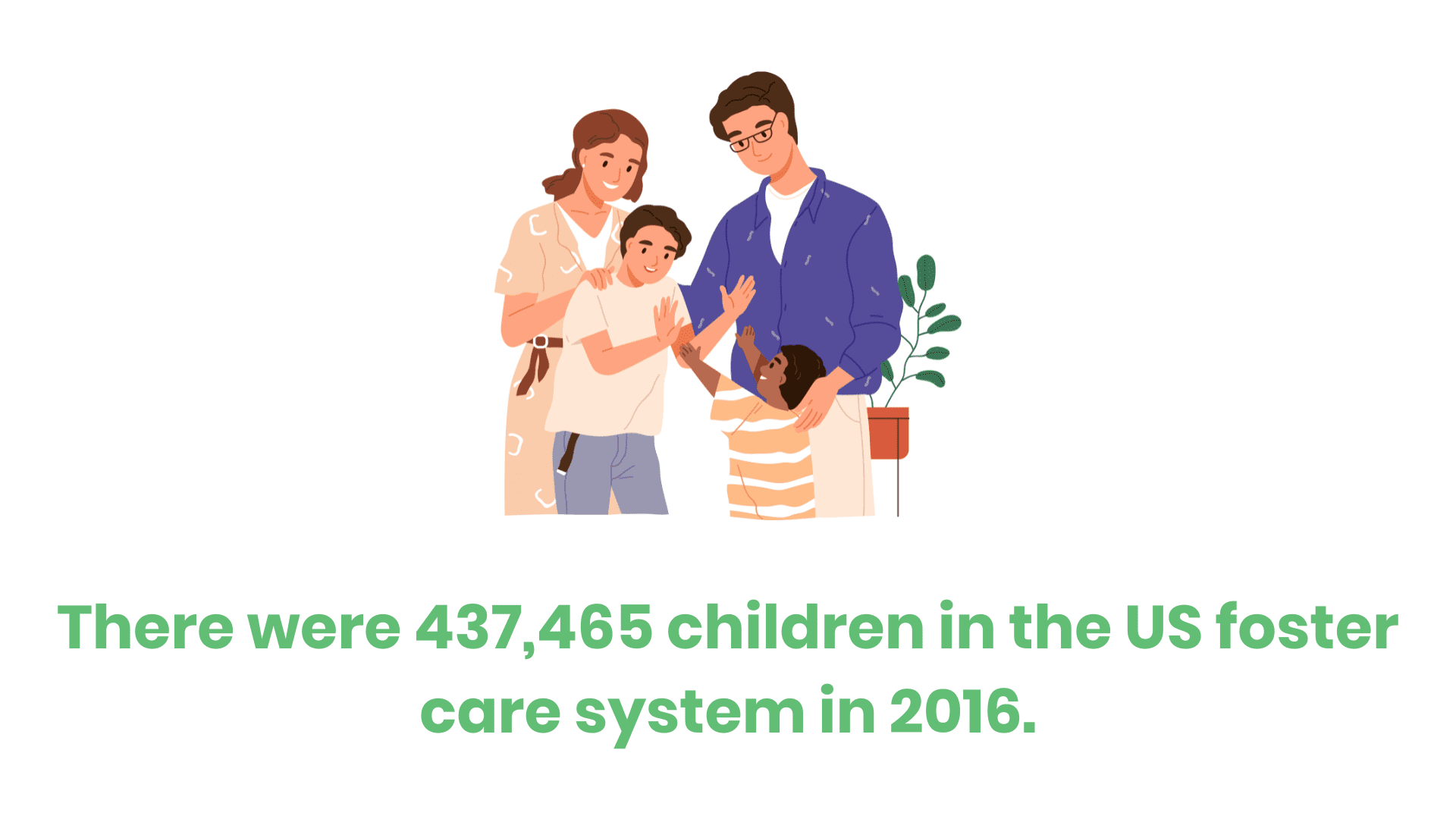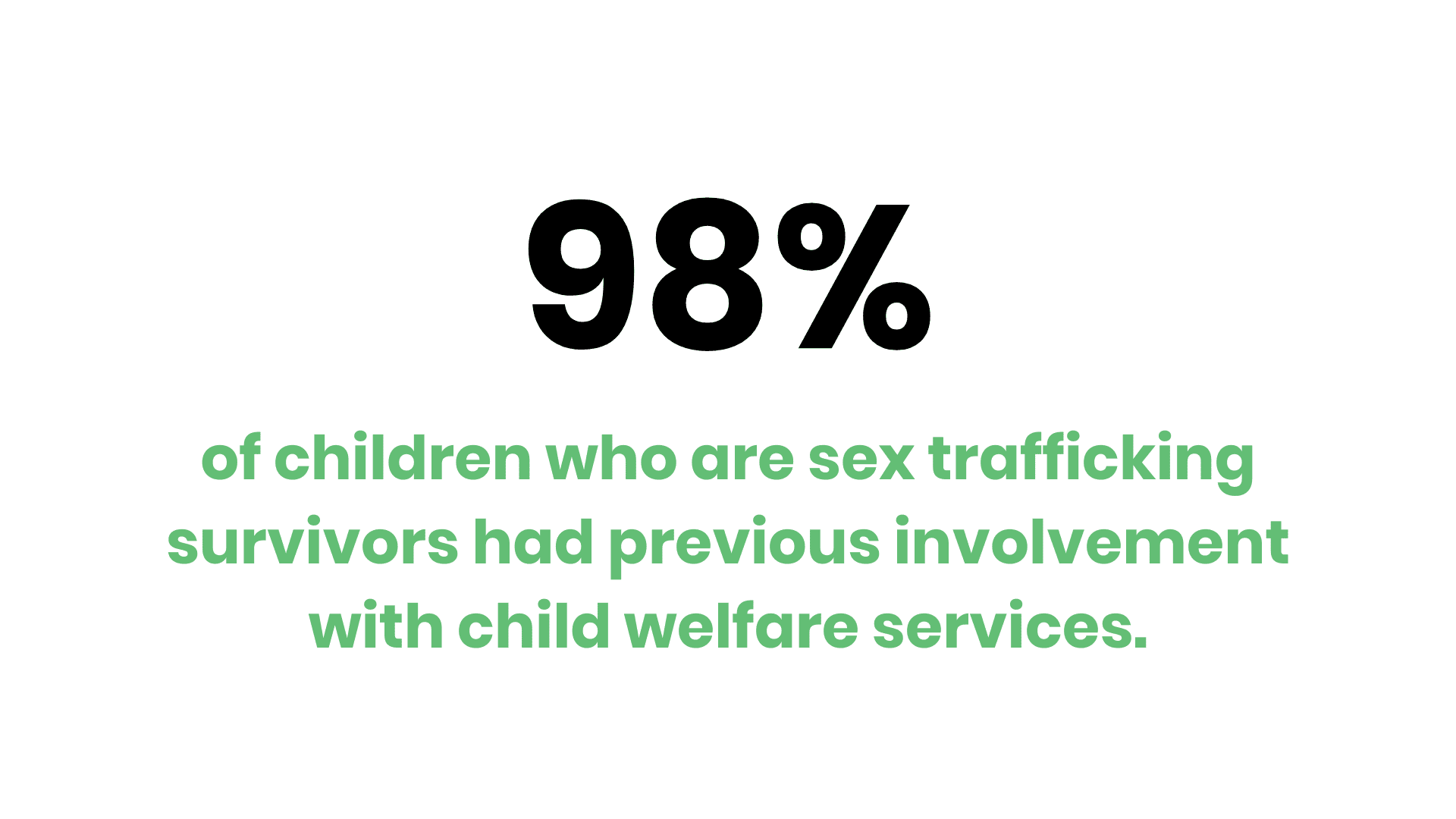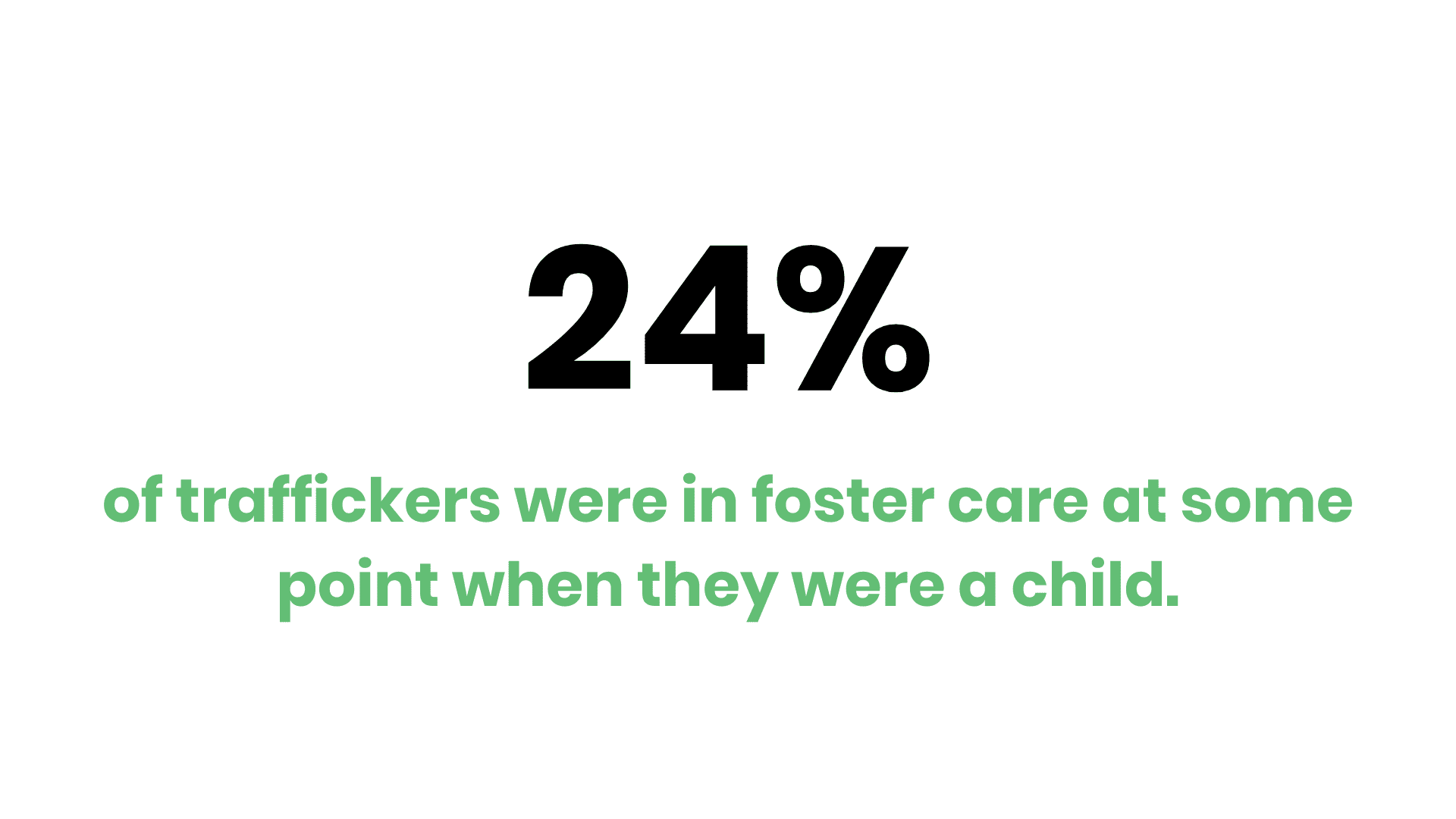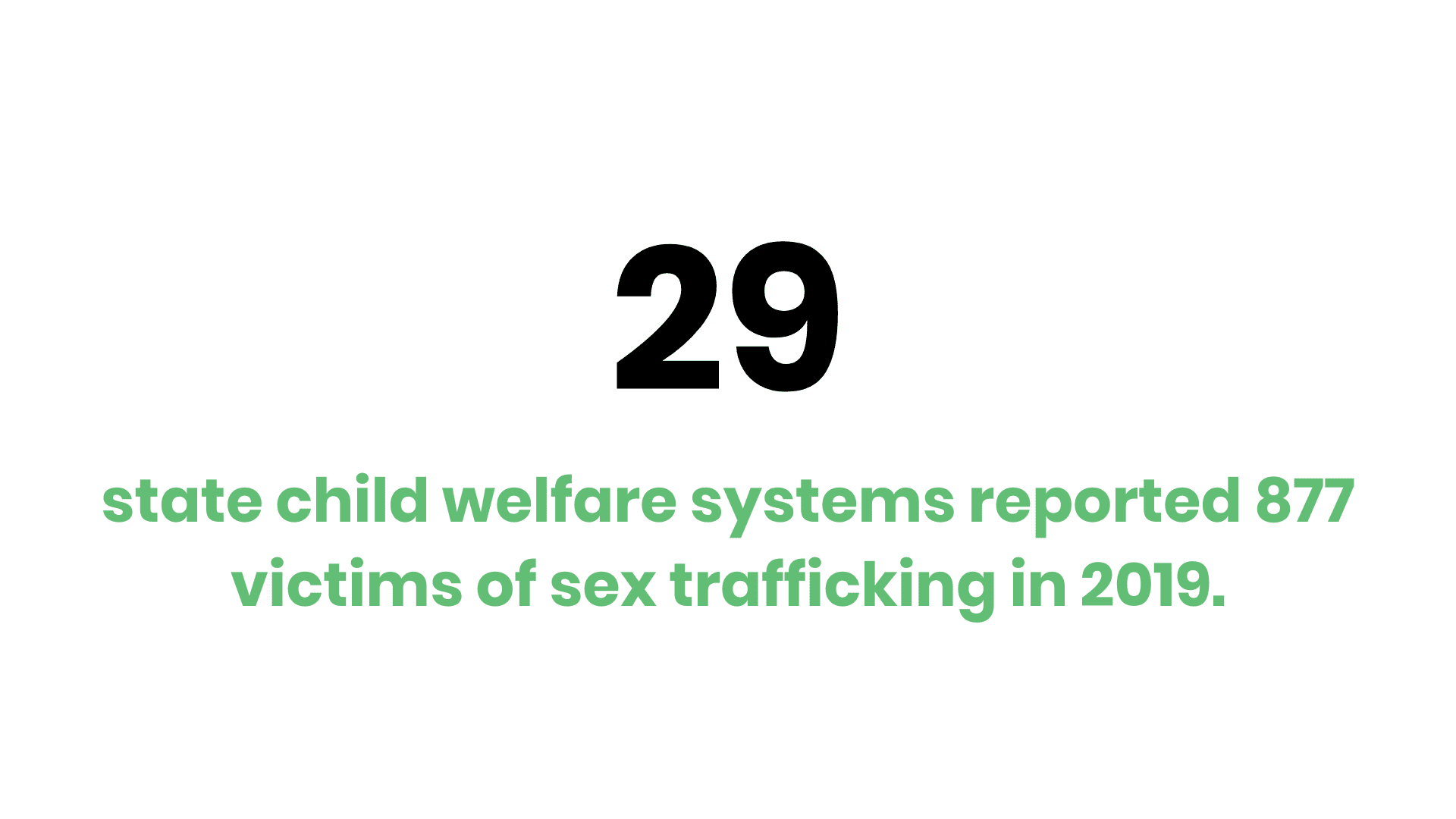
37+ Foster Care and Human Trafficking Statistics
You can trace the foster care system in the United States all the way back to 1636 in Jamestown, Virginia. In other words, the system of becoming the guardian for a child that’s separated from his/her family has practically existed since the inception of the US.
That’s an impressive feat and foster care as a whole has improved tremendously in modern times.
Unfortunately, there is historical evidence of human trafficking taking advantage of the system to groom and exploit the children within it.
One of the best ways to combat human trafficking in the foster care system is through learning what to look out for. Thus, it all starts with getting a glimpse into the current situations that exist between foster care and human trafficking.
We’ve researched some of the leading and most trustworthy reports to present to you more than 37 foster care and human trafficking statistics.
Table of Contents
The Foster Care System
The Code of Federal Regulations defines foster care as a 24-hour substitute care for children away from their parents or guardians. The people in charge of this substitute care become responsible for the children in this system.
A dwelling is a foster home regardless of whether the facility has a license. A child is in foster care regardless if there are payments from the state, tribal, or local agency to help provide care for the child. The same is true regardless if there are adoption subsidy payments made before the finalization of an adoption or if there is a federal matching of any payments made.
The government acknowledges that foster care can include nonrelative foster homes, relative foster homes, group homes, emergency shelters, residential facilities, pre-adoptive homes, and more.
You should now understand the scope of the foster care system. But what does the foster care environment look like? Below are some statistics that show a brief overview of the foster care environment.
-
In 2019, 251,359 children entered the foster care system. (Children’s Bureau)
-
In the same year, 248,669 children left foster care.
-
423,997 children remained in foster care during that time.
-
-
There were 437,465 children in the US foster care system in 2016. (Social Work Today)
-
Of these, 45% were in a non-relative household.
-
32% were in a relative family foster home.
-
-
6% of foster children were in institutions and 5% were on child home visits. (Children’s Bureau)
-
These are situations in which the state still has supervision of a child, the child returns home on a trial basis for an unspecified period, and they’re discharged from foster care after 6 months.
-
-
Less than 10% of children are in group homes, pre-adoptive homes, and supervised independent living. (Children’s Bureau)
-
An average of 55 children disappear from the US foster care system per day. (Gen Justice)
-
Around 1% of foster care children ran away in 2019. (Children’s Bureau)
Foster Care and Human Trafficking Victims
Unfortunately, the foster care system is a pipeline to trafficking. The proportion of trafficking victims recruited from foster care compared to other recruitment sites has gone down due to the pandemic in recent years. However, traffickers still actively target foster children.
Why target foster children?
Many kids see themselves as just a paycheck for foster and adoptive parents. It’s not uncommon for foster kids to report that their foster parents gave them the mindset that they’re only a paycheck.
In turn, this teaches the children that their worth and value isn’t intrinsic and that they’re only worth the money they bring in. The development of this mindset sets foster children up as easy prey for traffickers.
If a child feels like no one cares about them while moving from one placement to another, his/her craving for attention and stability can be dangerous. They can easily find themselves seduced by traffickers who pretend to care for the child, only to later exploit the child for financial gain.
So, children without their families are easy targets for traffickers. How bad is the situation?
Below are some foster care and human trafficking statistics to help provide insight…
-
An unknown number of kids who disappear from foster care end up trafficked.
-
Experts estimate that there are several thousands of foster kids that are actively trafficked today. (Gen Justice)
-
-
Out of all the children reported missing who are likely sex trafficking victims, 60% were in foster care or group homes when they ran away. (City Limits)
-
During the COVID-19 lockdowns, the proportion of victims from foster homes, a common recruitment site, went down 70%. (Polaris)
-
Instead, online recruitment increased by 22%.
-
-
The National Center for Missing and Exploited Children (NCMEC) receives reports of child sex trafficking in all 50 states; Washington, D.C.; and Puerto Rico. (NCMEC)
-
Almost 50% of domestic minor sex trafficked (DMST) adolescents in New York had some involvement with child welfare and the juvenile justice system. (MDPI)
-
At least 85% of all Commercial Sexual Exploitation of Children (CSEC) in New York had a history with child welfare. (OLP Foundation)
-
75% of those residing in New York City had spent time in foster care.
-
-
63% of the 270 surveyed adolescent sex trafficking victims reported that they had some involvement with the child welfare system while trafficked. (Social Work Today)
-
50% percent of children sold into trafficking in California had previous involvement with foster care. (OLP Foundation)
-
98% of children who are sex trafficking survivors had previous involvement with child welfare services. (OLP Foundation)
-
Many were legally in the care and custody of the state while sold by traffickers.
-
-
Children recovered from sex trafficking reported that the traffickers gave them a quota of up to 15 buyers per night. (Gen Justice)
Foster Care and Human Traffickers
Foster care produces many victims of human trafficking. But, it also produces many traffickers.
The idea that state custodians produce such vile people is appalling. How could someone exploit children with a similar upbringing?
Although there isn’t a good answer, the OLP Foundation found a few statistics about traffickers and how they grew up in the foster care system.
-
24% of traffickers were in foster care at some point when they were a child.
-
48% of the interviewed traffickers ran away from home in their youth due to physical or sexual assault.
-
100% of the interviewed ex-traffickers reported that they experienced physical violence in their home or foster care placement.
-
80% of traffickers reported experiencing sexual abuse as a child by a family member, foster care parent, or close family friend.
The abuse these convicted traffickers endured doesn’t excuse the abuse they inflicted. There’s no excuse for trafficking another human. The statistics above simply illustrate how the foster system affects both ends of human trafficking.
Foster Care Trafficking Over Time
Over the last 20 years, the federal government passed several major pieces of legislation to address the ever-changing landscape of human trafficking. The White House, federal departments, and federal agencies collaborated and took individual efforts to support victims of human trafficking.
Why would there be two decades of new legislation?
There’s a strong connection between human trafficking and foster care. But this is nothing new. Traffickers have sought out children in this system since the foster care system was first established.
Below are some statistics about foster care trafficking since 2010 to give you a better understanding of how the situation changed over time.
-
In 2021, the National Center for Missing and Exploited Children (NCMEC) received reports of more than 17,200 cases of possible child sex trafficking. (NCMEC)
-
Roughly 17% of the 25,000 missing child reports filed in 2021 who ran away are likely victims of child sex trafficking. (NCMEC)
-
Of all the children reported missing in 2021 after running away from child welfare, 19% were likely victims of child sex trafficking. (NCMEC)
-
In 2020, 35 states reported a total of 953 child victims of sex trafficking. (ACF)
-
In 2019, 16% of missing children who ran from social services were likely victims of human sex trafficking. (NCMEC)
-
29 state child welfare systems reported 877 victims of sex trafficking in 2019. (ACF)
-
In 2013, 60% of the sex trafficking victims recovered from over 70 cities in an FBI nationwide raid were children from foster care or group homes. (City Limits)
-
50% to over 90% of child sex trafficking victims in 2013 had some sort of involvement with child welfare services. (CWIG)
-
In 2012, Connecticut reported 86 child sex trafficking victims with welfare involved. (City Limits)
-
Most reported abuse while in foster care or residential placement.
-
-
In 2010, Los Angeles officials shared that 59% of kids arrested for prostitution were in the foster care system. (City Limits)
-
Over 80% of girls forced into child trafficking in 2010 had a previous interaction with public child welfare and family services. (MDPI)
Conclusion
As you’ve learned after reading, the situation between foster care and human trafficking doesn’t look great.
Luckily, it isn’t all bad. There are several hundred organizations that exist to combat human trafficking across the US that do fantastic work.
Not to mention the fact that by reading this blog post, you’re already on your way toward aiding in the fight against human trafficking as a whole. The first step to any solution is becoming aware of the problem. So, if you think human trafficking is something that only happens “over there” or to “other people,” then this post has hopefully given you a different perspective.
It’s important for us all to stay informed and behave responsibly when it comes to the welfare of minors both in our communities and around the world.




